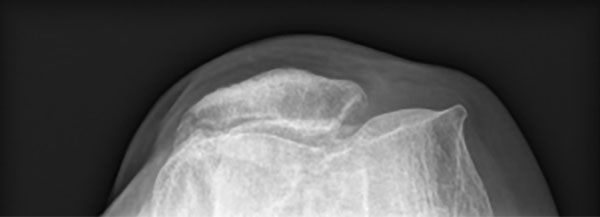
What is patellofemoral arthritis?
Patellofemoral arthritis occurs when the cartilage on the back of the kneecap and on the groove (trochlear groove) where it runs wear out. It can be isolated to this area (kneecap arthritis) or be found more generally throughout the knee (knee arthritis). Arthritic change can vary from fissuring of small areas of the cartilage (early arthritis) to complete loss of the cartilage. If the cartilage wears away completely the bone underneath can become exposed (bone on bone arthritis).
How common is patellofemoral arthritis?
Arthritis affecting the kneecap joint is quite common and found in 25% of the population over the age of 20 years. Isolated kneecap arthritis (only affecting this part of the joint) is found in about 10-23% of the population.
What causes kneecap arthritis?
If you fracture your kneecap you can damage the cartilage and even if the kneecap heals, the cartilage may not recover, meaning you have an increased risk of developing arthritis later on in life.
Kneecap arthritis is commoner in people who have problems with how their kneecap tracks. If your kneecap does not fit well in the groove (if the groove is flat, the kneecap is tilted or overlapping the edge of the groove) you can put more pressure on the cartilage which risks wearing it out and resulting in arthritis.
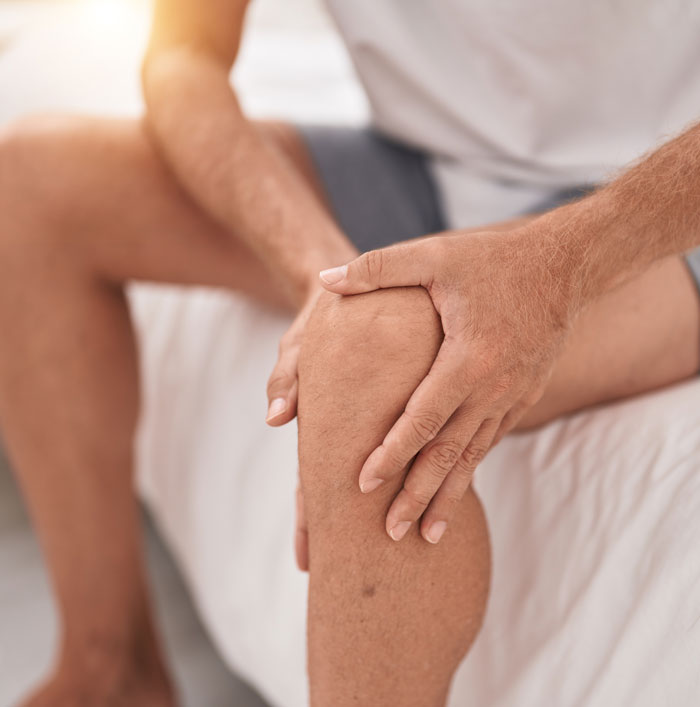
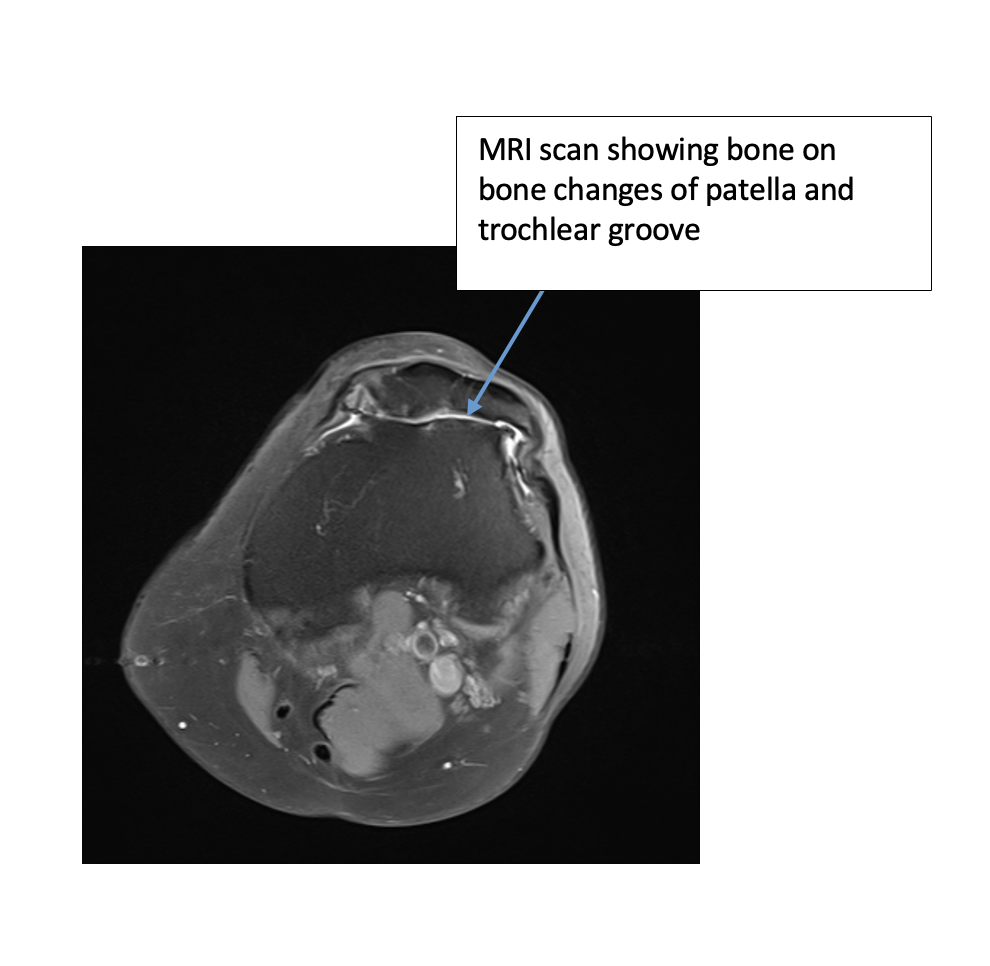
What are the symptoms of kneecap arthritis?
You may notice pain which feels localised to the front of the knee. Typically things that make the pain worse include going up and down stairs, sitting for a long time, squats and walking downhill.
You make notice a crunch or creaking sound from your knee as you bend it which is painful. The knee may feel as if it catches or locks and you might not be able to bend it all the way.
What investigations are used to diagnose kneecap arthritis?
In the first instance an X-ray or radiograph is taken in the clinic to look at the bones in your knee. Sometimes an MRI is also needed to image the cartilage lining of your knee and also investigate the shape of your kneecap and groove. These investigations are used to determine how severe your arthritis is and if it just affects the kneecap or if it affects more of your knee.
What is the treatment of kneecap arthritis?
This depends very much on your symptoms. It is worth trying physiotherapy first as well as weight loss, ensuring you have good footwear and using hiking poles if you like to take long walks. Painkillers can also help treat the pain.
More information can be found here on different treatments and their evidence in knee arthritis:
Injections which can be offered are steroids, visco-supplementation and platelet rich plasma (PRP). There is not enough good evidence in the literature at the moment to recommend visco-supplementation or PRP for routine use.
More information can be found here:
https://www.versusarthritis.org/about-arthritis/conditions/osteoarthritis/
https://www.boa.ac.uk/resource/injectable-orthobiologic-treatments-for-osteoarthritis.html

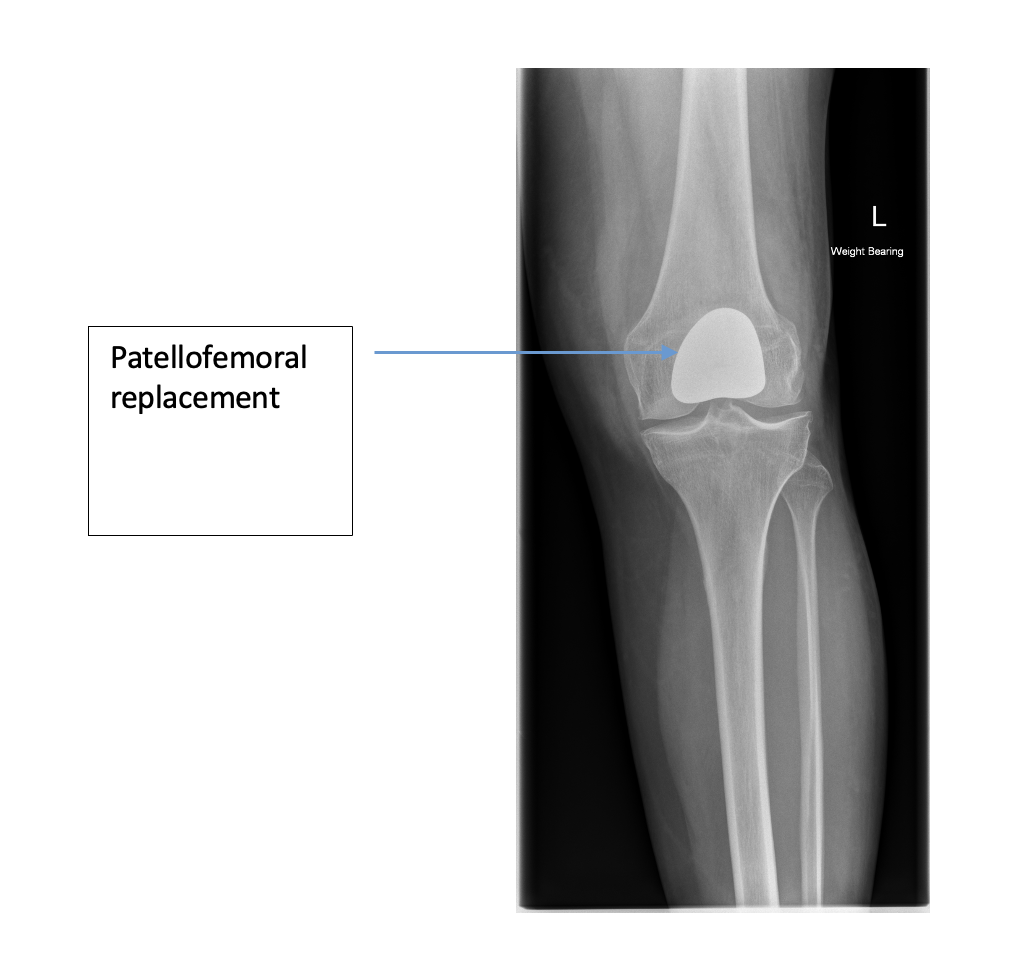
Surgical Options for Patellofemoral Arthritis
If you have tried all other options then surgery may be offered which depends on how severe the arthritic change is. Keyhole surgery in less severe cases of arthritis can sometimes help by shaving away some of the worn cartilage and sometimes by drilling holes in the bone to encourage new cartilage to form (microfracture). If the arthritic change is isolated to a small area and you are young then cartilage grafting may be appropriate.
Realigning a kneecap that is tilted or sits very high in the knee can help if doing so offloads an area of worn cartilage and loads a healthier area of cartilage. A tibial tubercle osteotomy is used to move the kneecap across and down if appropriate.
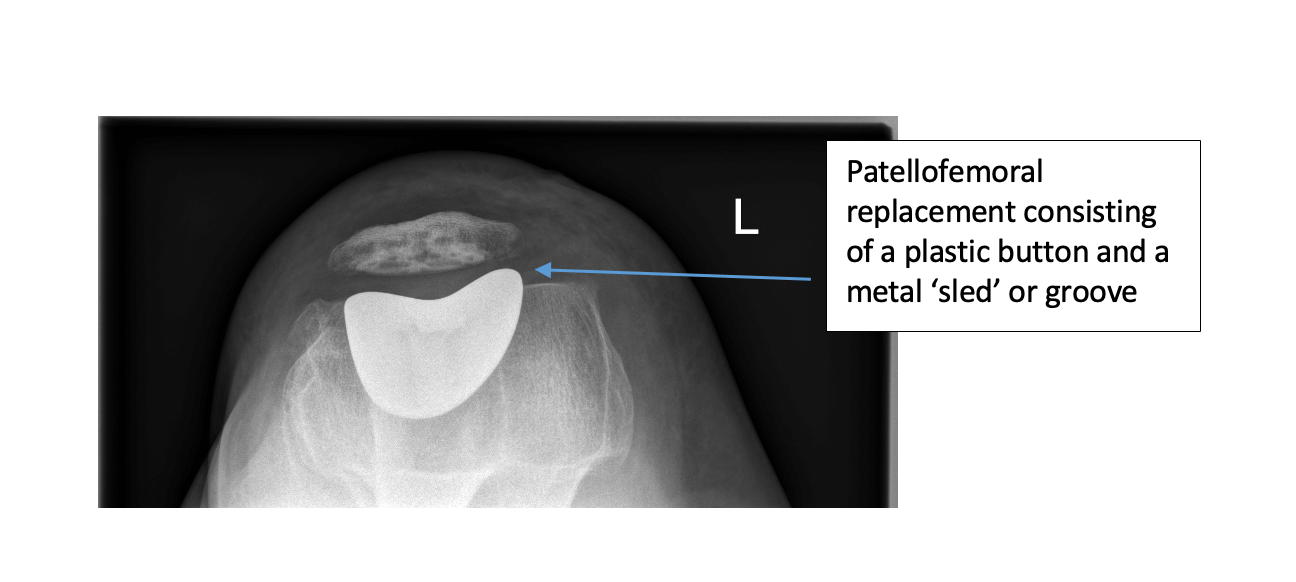
If the cartilage is completely worn away behind the kneecap and you are at an appropriate age then a patellofemoral replacement is an option. This involves replacing the back of your kneecap with a plastic button and the worn out groove with a metal groove. This allows your kneecap to slide in the new metal groove.
A patellofemoral replacement can last from 5-10 years and if it wears out then it would need to be replaced with a total knee replacement which is a larger operation. If your kneecap arthritis also affects the rest of the knee joint or you are older than 70 years then a total knee replacement may be more appropriate.
